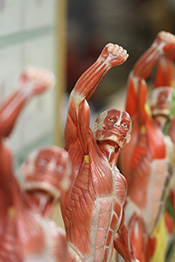 Many gross anatomy groups exist only to teach. The Clinical Anatomy Research Group at Otago is one of only a few groups in the world that also does clinically related anatomy research. The high calibre of their research is evident in the number and quality of their published papers and the amount of times these papers are referenced.
Many gross anatomy groups exist only to teach. The Clinical Anatomy Research Group at Otago is one of only a few groups in the world that also does clinically related anatomy research. The high calibre of their research is evident in the number and quality of their published papers and the amount of times these papers are referenced.
Most of their research is done in close collaboration with engineers and clinical professionals in the field and addresses patient issues that clinicians face on a day-to-day basis. The results can be seen in the new technologies and techniques that come about because of this research: new materials for arthroplasty, refined surgery techniques, and new exercises programmes to improve the recovery rate of patients.
Principal Investigators (PIs)
Associate Professor Yusuf Cakmak
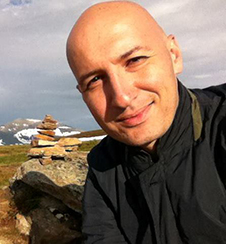
Our major interest is the neuromodulation of internal organs and the brain structures to modulate their functions and blood flow. We focus on the effects of different frequencies of non-invasive electrostimulation on internal organs blood flow to increase and decrease the blood flow.
We had six neuromodulation related Patent Cooperation Treaties (PCTs) and we are interested in investigating more novel non-invasive stimulation techniques to normalize the neuronal network functions and alleviate the symptoms of neurological diseases.
Southwest Research Institute (Texas) is producing a prototype for one of our PCT related neuromodulation devices for internal organ blood flow modulation. Inventram company supports our Parkinson's Disease related biomedical device clinical trials.
We are also researching for Interactive Virtual Reality (Hand and Forearm Muscular Avatar project is the recent one) and 3D image processing as a treatment modality, teaching and as a diagnostic tool.
Yusuf is also a member of the 'Neuroscience research group'.
Professor George Dias
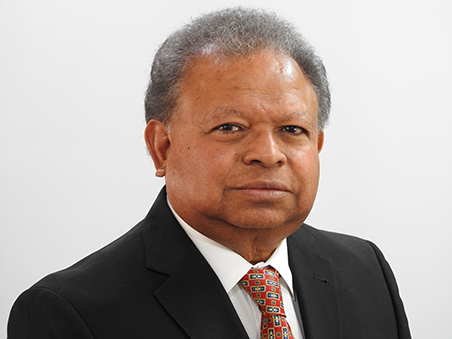
George trained as a dental surgeon then specialised in oral & maxillofacial surgery, but his research interests have expanded greatly since his clinical days. His main areas of interest today are:
- Development of a biocompatible, biodegradable bone graft substitute from reconstituted keratin, metal alloys and cellulose.
- Development of new composite surgical appliances.
- Assessment of sintered bovine bone "True Bone Ceramics" to be used as bone substitutes.
- Osteological studies; particularly skeletal responses to pathological and environmental factors in contemporary and archaeological skeletal material.
- Investigation of the detailed anatomy of structures in the head and neck region.
- Forensic facial reconstruction.
While not part of his main anatomy research, George has also found a way to extract protein from wool as a premium food ingredient.
Dr Natasha Flack
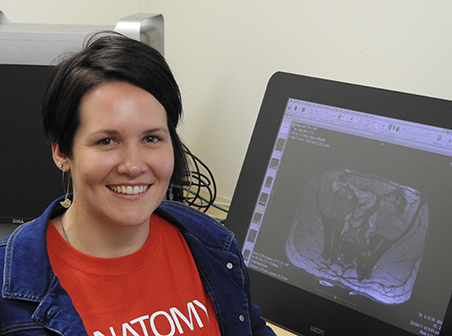
Natasha's research includes both clinical anatomy and anatomical sciences education (ASERT).
Her primary interest is in the musculoskeletal anatomy of the lower limb, and the ultimate aim of her research is to provide scientific, anatomical evidence for improving clinical treatments, procedures and outcomes. Natasha incorporates a range of techniques such as imaging (MRI, ultrasound etc), dissection and histology into her research approaches.
Recent projects have investigated the anatomy of the iliocapsularis muscle, the pubic symphysis, and the gluteal muscles, and their particular roles in different pathological conditions.
Currently, Natasha is working with Podiatrists at the CDHB to develop a system for the accurate mapping and recording of diabetic foot ulcers.
Dr Jerin Mathew
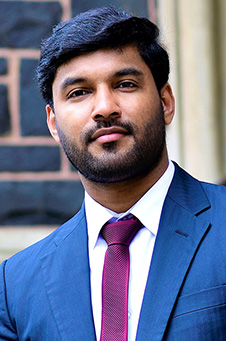 Jerin is a physiotherapist by profession with a particular interest in pain research. His primary research aims to understand the “brain-pain” mechanisms driving chronic musculoskeletal ( MSK ) pain and improve clinical pain outcomes through electroencephalography ( EEG ) based neurofeedback (Brain training). Jerin endeavours to further investigate structural and functional changes associated with MSK pain conditions and test the potential of neurofeedback as an intervention for managing associated pain experience.
Jerin is a physiotherapist by profession with a particular interest in pain research. His primary research aims to understand the “brain-pain” mechanisms driving chronic musculoskeletal ( MSK ) pain and improve clinical pain outcomes through electroencephalography ( EEG ) based neurofeedback (Brain training). Jerin endeavours to further investigate structural and functional changes associated with MSK pain conditions and test the potential of neurofeedback as an intervention for managing associated pain experience.
In addition to his interventional health research, he plans to incorporate various imaging techniques (Ultrasound, Source localised EEG neuroimaging, MRI etc.) to better understand the relationship between the MSK system and the brain.
His key research areas of interest are:
- The biopsychosocial model and chronic secondary MSK pain conditions
- EEG neuroimaging and neurofeedback
- Application of imaging techniques to improve morphological understanding of skeletal structures and brain
Professor Helen Nicholson
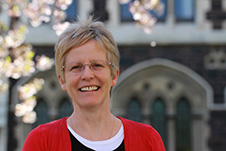
Helen trained as a medical doctor in the UK. Her research interests include clinical anatomy, medical education and reproductive biology. She has also worked with Dr Paul Trotman to produce the documentaries “Donated to Science” and “Practising Medicine”.
Her current research interests are:
- The clinical anatomy of the hip.
- Exploring the students' voice on dissection, body donation, death and dying.
- Exploring the professional development of medical students.
Helen is a member of the Executive Committee of the International Federation of Associations of Anatomists. She is also the Deputy Vice-Chancellor (External Engagement) at the University of Otago.
Dr Erik Wibowo
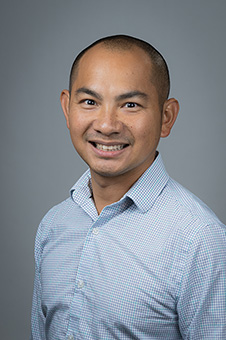 Erik is interested in understanding the side effects of androgen deprivation (ADT) in prostate cancer patients. Men with systemic prostate cancer are commonly prescribed ADT in order to slow down the cancer growth. ADT, however, deprives men of testosterone. ADT results in numerous side effects that detrimentally impair the quality of life of both patients and their partners. Erik plans to further investigate the impact of androgen deprivation on sexual, sleep and cognitive functions in both prostate cancer patients and on animal models. Research Projects:
Erik is interested in understanding the side effects of androgen deprivation (ADT) in prostate cancer patients. Men with systemic prostate cancer are commonly prescribed ADT in order to slow down the cancer growth. ADT, however, deprives men of testosterone. ADT results in numerous side effects that detrimentally impair the quality of life of both patients and their partners. Erik plans to further investigate the impact of androgen deprivation on sexual, sleep and cognitive functions in both prostate cancer patients and on animal models. Research Projects:
- Erik is exploring how lifestyle, physical and psychosexual factors influence sleep quality in prostate cancer patients and their partners.
- By using animal models, Erik plans to investigate the impact of sleep loss on sexual and memory functions, and how these impacts can be modulated by hormone deprivation (e.g., gonadectomy) or supplementation (e.g., estrogen treatment).
Professor Stephanie Woodley
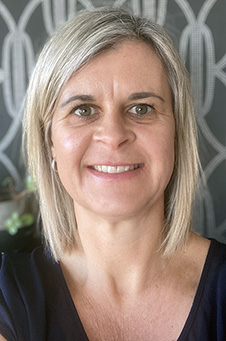
Stephanie has a professional background in physiotherapy, and endeavours to produce applied research that is relevant to clinical practice. Her primary area of interest is musculoskeletal anatomy, particularly of the hip and pelvic regions.
Recent studies have examined the morphology and morphometry of the hamstring muscles using MRI and ultrasound, and the physiotherapy and radiological diagnosis of lateral hip pain. Ongoing research studies include validation of a questionnaire for pregnancy-related symphyseal pain, and investigating the effect of a prehabilitation programme on muscle strength and morphology in individuals with advanced hip joint osteoarthritis.
"Clinical anatomy has an important role in contributing to the understanding of normal function as well as dysfunction and pathology of the musculoskeletal system."
Associate Professor Ming Zhang
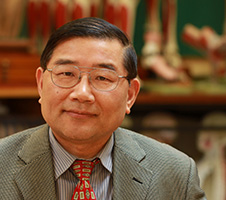
Ming's interest is centred on two broad clinical anatomy areas; (1) vascular anatomy associated with neurosurgical approaches and neuroradiology; and (2) tissue patterning of deep fasciae in the human body.
His research group is currently investigating; (1) the configuration of the deep fasciae and fascial spaces, (2) the minimal invasive surgical anatomy of the skull base, and (3) the morphological factors that contribute to dysphagia (difficulty swallowing).
The main techniques used in the clinical anatomy area include dissection, epoxy sheet plastination, SEM, TEM, confocal microscopy and whole-mount immunohistochemistry, micro-CT, MRV and Digital Subtracted Angiography.